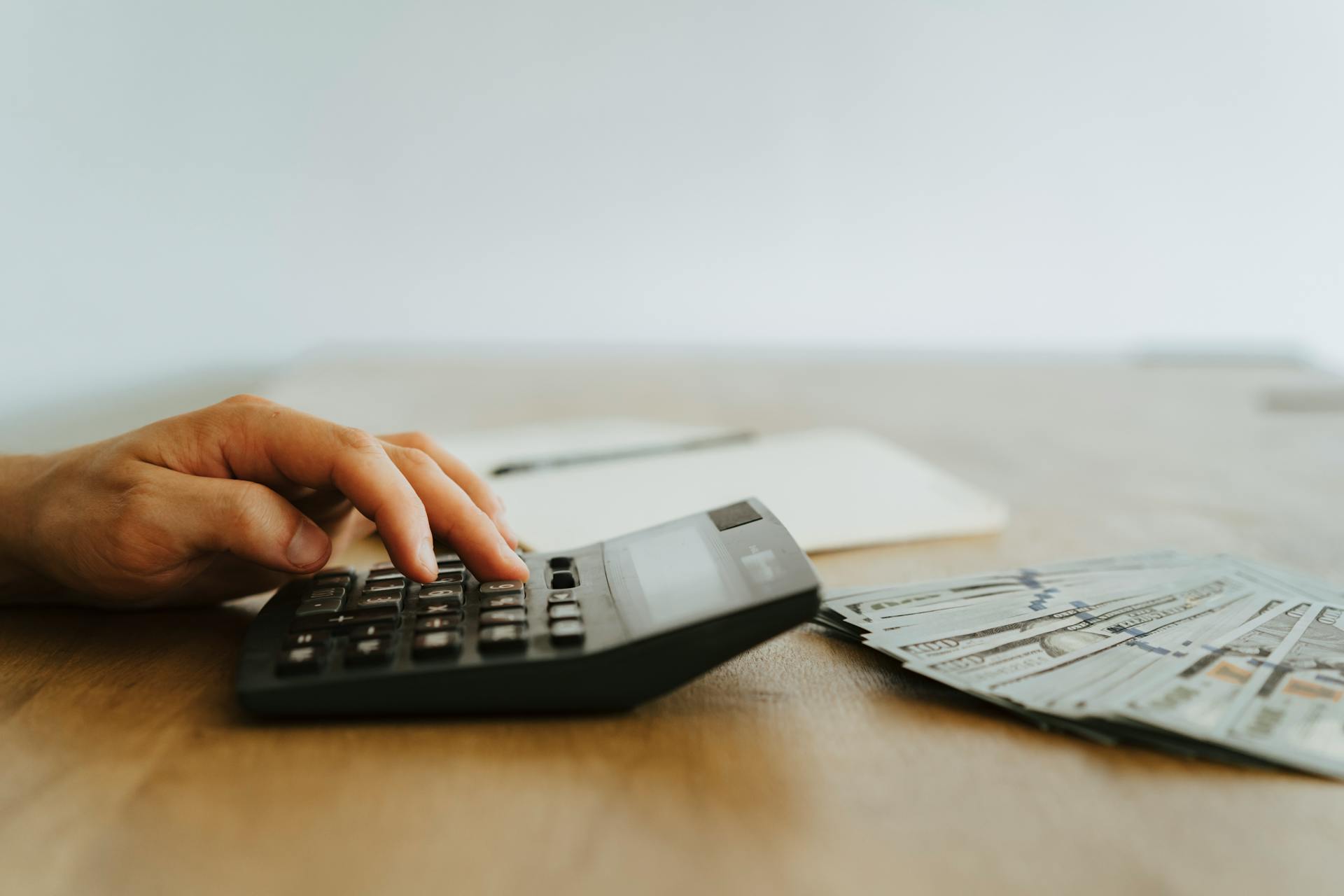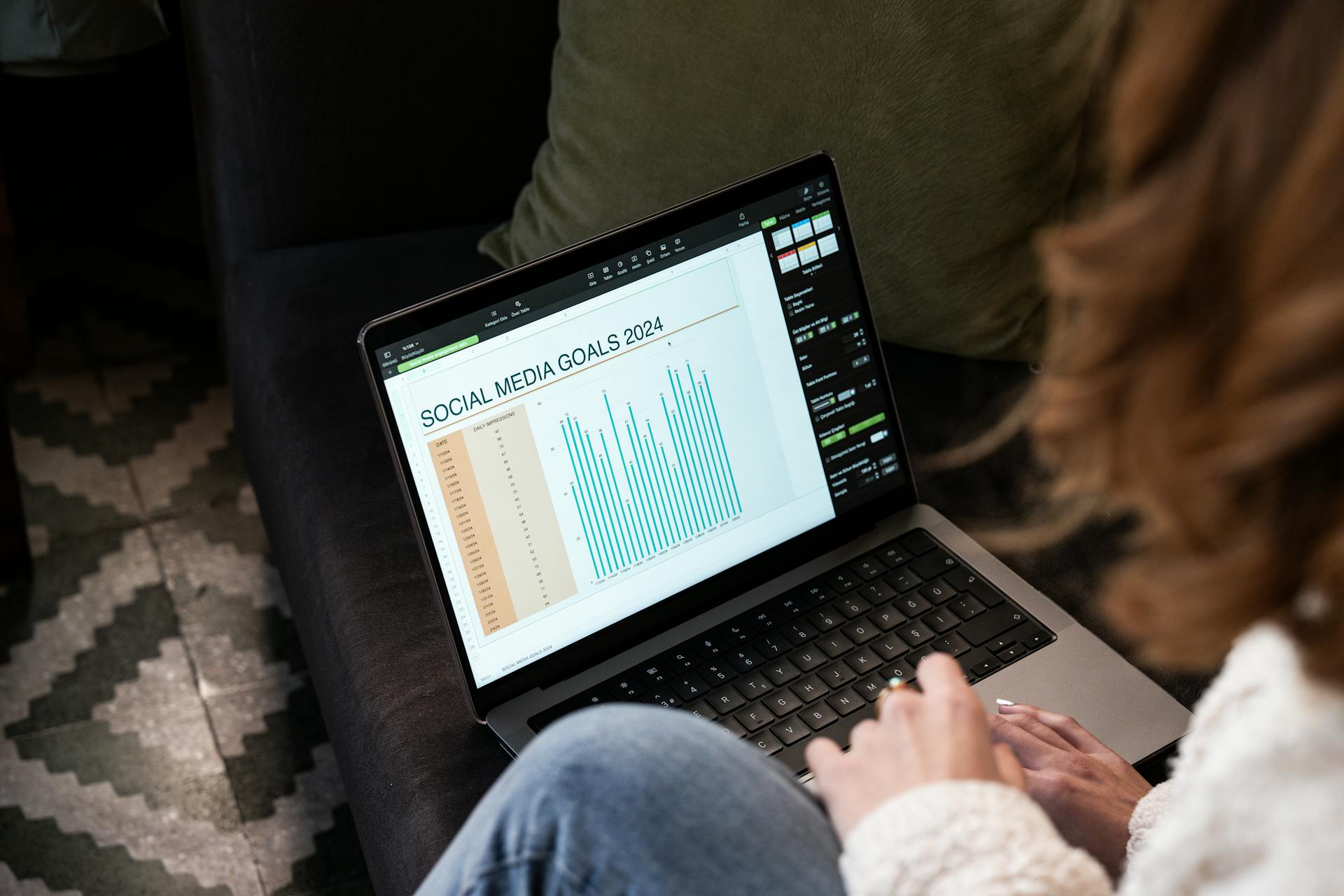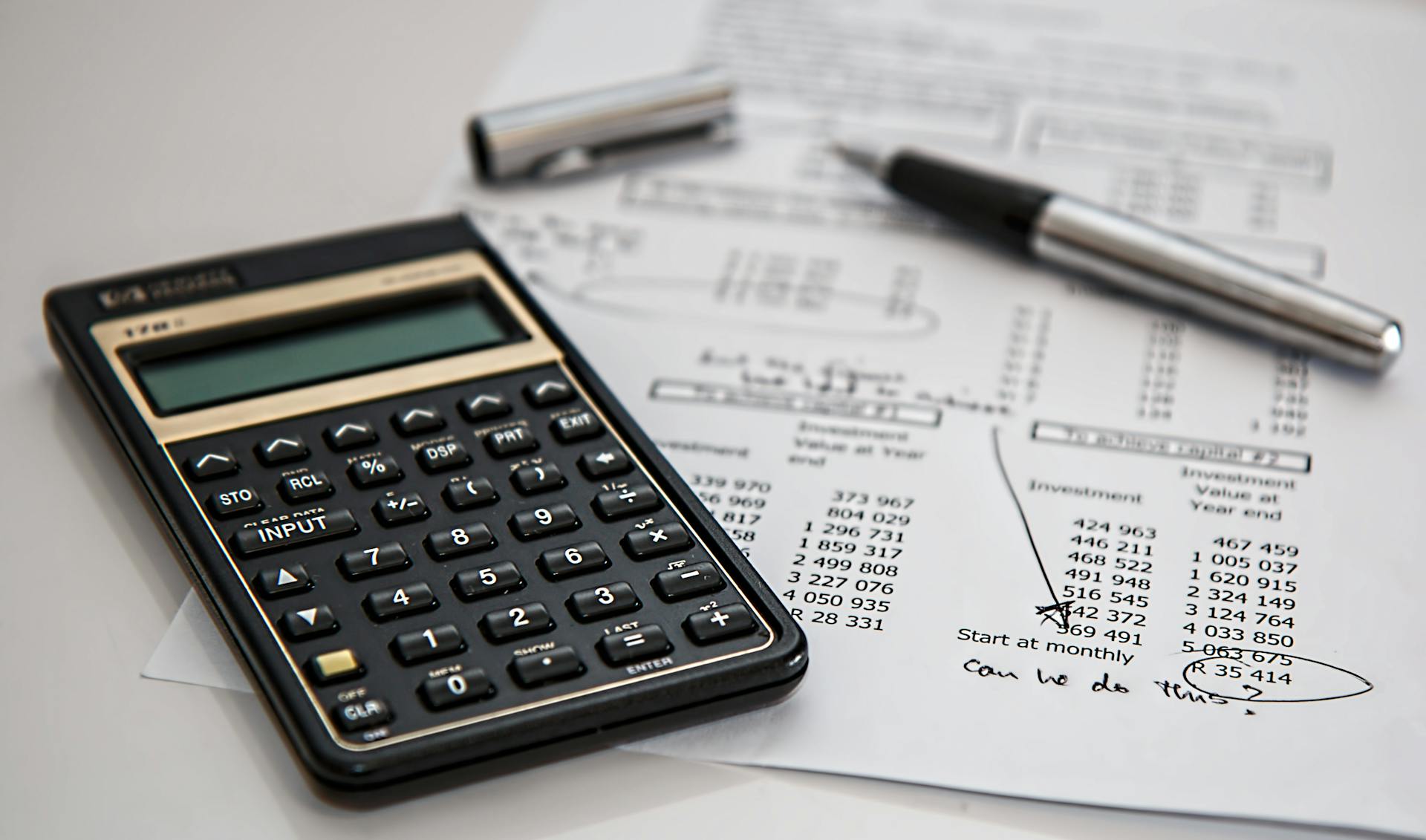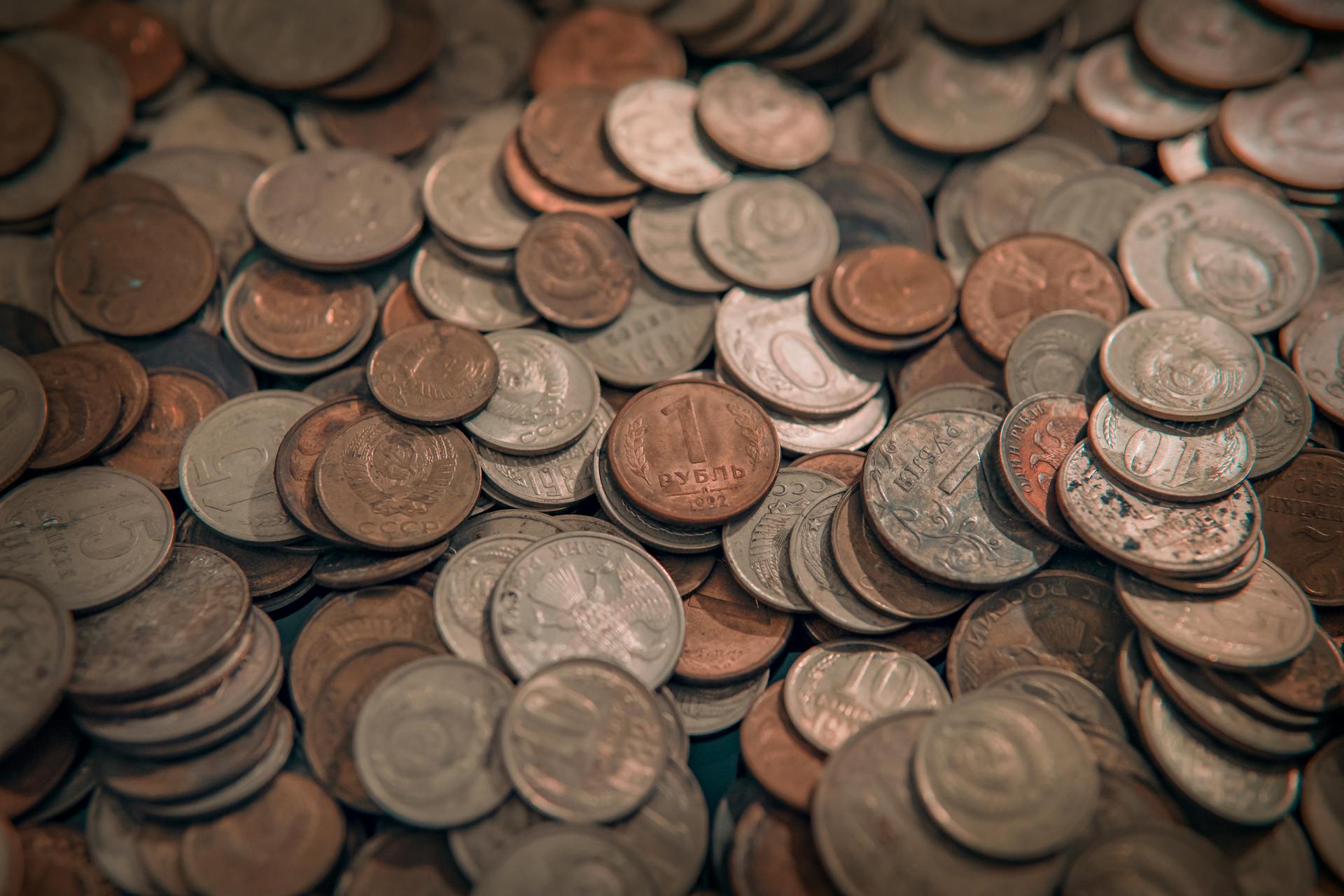
Straight line depreciation can be a bit of a gray area when it comes to categorizing it as a fixed cost or variable expense. In the context of accounting, straight line depreciation is actually a fixed cost.
It's calculated as a fixed percentage of the asset's value over its useful life, which is determined upfront. This means that the depreciation expense remains the same each year, regardless of changes in production or sales.
What Is
Straight line depreciation is a method of depreciating an asset's value over its useful life, evenly spreading the cost across each year. It's used for assets like machinery, vehicles, buildings, and office equipment.
The goal of depreciation is to match the expense of the asset with the revenue it generates over time. Depreciation expense is a non-cash expense, meaning it doesn't involve actual cash outflows.
Straight line depreciation assumes that an asset will lose value at a consistent rate over time. This method is especially appropriate for assets that wear down or lose value at a steady pace, such as furniture, office equipment, or buildings.
Intriguing read: Do You Subtract Accumulated Depreciation from Assets

The straight line depreciation formula is simple: Depreciation Expense = Cost of the Asset - Salvage Value / Useful Life. This formula divides the depreciable cost by the number of years the asset will be in use.
Here are the key components of the straight line depreciation formula:
- Cost of the Asset: The initial purchase price of the asset.
- Salvage Value: The asset's estimated residual value at the end of its useful life.
- Useful Life: The period over which the asset is expected to be used in the business, usually expressed in years.
Depreciation expense is recorded as a debit to expense and a credit to a contra-asset account, accumulated depreciation. The accumulated depreciation account has a normal credit balance, as it offsets the fixed asset.
Calculating Straight Line Depreciation
Calculating straight line depreciation is a straightforward process that involves a few key steps. To determine the total cost of an asset, you need to add the purchase price, sales tax, and any other costs, such as shipping or installation.
The salvage value of an asset is its estimated value when it is no longer expected to be needed. This value can be optional, but it's used to calculate the depreciable amount. The useful life of an asset is the period over which it is expected to be useful, usually expressed in years.

To calculate the annual depreciation expense, you need to subtract the salvage value from the purchase price and divide the result by the useful life. This will give you the annual depreciation expense, which remains the same each year.
Here's an example of how to calculate straight line depreciation:
- Purchase price: $22,000
- Salvage value: $2,000
- Useful life: 10 years
Depreciation calculation: $22,000 - $2,000 = $20,000 ÷ 10 = $2,000
You would depreciate $2,000 for the expected 10 years of the life of the machinery.
The straight line depreciation formula is: Depreciation Expense = Cost of the Asset - Salvage Value / Useful Life. This formula divides the depreciable cost (the asset's initial cost minus the salvage value) by the number of years the asset will be in use.
Here's a summary of the steps to calculate straight line depreciation:
1. Determine the cost of the asset
2. Estimate the salvage value
3. Estimate the useful life of the asset
4. Apply the straight line depreciation formula
By following these steps, you can calculate the annual depreciation expense for an asset using the straight line method.
Check this out: Straight Line Depreciation in Excel
Advantages and Disadvantages

Straight line depreciation is a fixed cost because it expenses the same amount every accounting period. This makes it easier to calculate and apply.
The straight-line method is easy to use, requiring only three variables to calculate depreciation each accounting period. It renders fewer errors over the life of the asset, which is a significant advantage.
Straight line depreciation is widely used because of its simplicity. Businesses use it to depreciate assets such as machinery, vehicles, buildings, and office equipment.
This method results in equal depreciation expenses every year, making accounting easier and more predictable. It's especially appropriate for assets that wear down or lose value at a steady pace, such as furniture, office equipment, or buildings.
Readers also liked: Accumulated Depreciation Buildings
Alternative Methods
Under US GAAP, there are alternative methods to straight-line depreciation that businesses can use to calculate depreciation expense. These methods include the double-declining balance method, sum-of-the-years'-digits depreciation method, and units of production depreciation method.
Broaden your view: Depreciation Expense Straight Line Method

The double-declining balance method is a more accelerated method of depreciation, which means it calculates a higher depreciation expense in the early years of an asset's life. This method is often used for assets with a shorter useful life.
The sum-of-the-years'-digits depreciation method is another method that calculates a higher depreciation expense in the early years of an asset's life. This method takes into account the asset's remaining useful life and calculates the depreciation expense accordingly.
The units of production depreciation method is a method that calculates depreciation based on the actual usage of an asset. This method is often used for assets such as machinery or equipment that have a variable usage pattern.
Here are the four depreciation methods under US GAAP:
- Double-declining balance method
- Sum-of-the-years'-digits depreciation method
- Units of production depreciation method
While these alternative methods may provide a more accurate picture of an asset's depreciation, they can also be more complex to calculate and may require more frequent updates.
Realistic Assumptions and MACRS

Making realistic assumptions about an asset's salvage value and useful life is crucial when using the straight-line method of depreciation. These assumptions can be costly if they're incorrect.
The straight-line method assumes a steady and unchanging rate of decline in an asset's value, but this might not be true for all assets. In such cases, a different method like MACRS should be used.
MACRS, or Modified Accelerated Cost Recovery System, is the depreciation method used for tax purposes in the U.S. under the Internal Revenue Code.
Explore further: Macrs Depreciation vs Straight Line
Realistic Assumptions in the Method
Making realistic assumptions is crucial when using the straight-line method of depreciation.
The straight-line method assumes that an asset's value declines at a steady and unchanging rate, which may not be true for all assets. This could lead to inaccurate depreciation expense calculations.
To accurately calculate depreciation expense, you need to make assumptions about the salvage value and useful life of the asset. These numbers can be arrived at in several ways, but getting them wrong could be costly.
For another approach, see: Percentage-of-completion Method

The salvage value is the estimate of the amount the company expects to receive for the asset if sold at the end of its useful life. The useful life of the asset is the estimated amount of time the asset is expected to be functionally used before it needs to be replaced or disposed.
Here are the inputs required to calculate depreciation expense using the straight-line method:
- The cost of the asset: the amount the business paid for the asset or for the use of the asset
- The salvage value: the estimate of the amount the company expects to receive for the asset if sold at the end of its useful life
- The useful life of the asset: the estimated amount of time the asset is expected to be functionally used before it needs to be replaced or disposed
MACRS
MACRS is a depreciation method used for tax purposes in the U.S. under the Internal Revenue Code.
It allows businesses to depreciate assets over a shorter time, which can result in higher depreciation deductions in the early years of an asset's life.
The method uses different percentages based on asset classes, unlike straight line depreciation.
This can impact financial statements, taxes, and cash flow, making it a crucial choice for businesses.
Businesses often choose the method that best matches the pattern of the asset's wear and tear or provides the greatest tax benefits.
Calculations and Formulas

The straight-line depreciation formula is quite simple, requiring just a few key pieces of information.
To calculate the straight-line depreciation expense, you need to gather the three components: the cost of the asset, its salvage value, and its useful life.
The formula can be expressed as: Depreciation Expense = Cost of the Asset - Salvage Value / Useful Life.
This formula divides the depreciable cost (the asset's initial cost minus the salvage value) by the number of years the asset will be in use.
The depreciable amount is calculated by subtracting the salvage value from the asset's cost.
The annual depreciation expense is then calculated by dividing the depreciable amount by the useful life of the asset.
For example, if you purchase a piece of plant machinery worth $22,000, which is expected to last 10 years, and has a salvage value of $2,000, the annual depreciation expense would be $2,000.
You might like: The Formula for Computing Annual Straight Line Depreciation Is

A strong form finance lease assumes the lessee will own the asset at the end of the lease term, and the asset is depreciated over the useful life of the asset.
In our example, the title transfers, which means at the end of the lease term the lessee will own the asset and continue depreciating it.
Here's a summary of the straight-line depreciation formula:
Frequently Asked Questions
Is straight line depreciation fixed?
Straight-line depreciation is a fixed rate applied to a company's assets over a set period, not a fixed amount. This rate remains constant, but the asset's value decreases over time.
Sources
- https://www.investopedia.com/terms/s/straightlinebasis.asp
- https://www.xero.com/us/guides/straight-line-depreciation-explained/
- https://vencru.com/blog/what-is-straight-line-depreciation/
- https://blog.thebrokerlist.com/depreciation-expense-straight-line-method-explained-with-a-finance-lease-example-and-journal-entries/
- https://www.ctas.tennessee.edu/eli/depreciation-methods-and-rates
Featured Images: pexels.com


